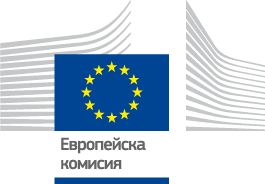

FLAG Factsheet
The Archipelago Sea has the world's largest inland sea archipelago; the landscape is dominated by over 22,000 islands and the coastline is 12,000 km long. The FLAG has an area of 14,000 km2 and the sea accounts for more than half of this. The region includes both densely populated cities and sparsely populated rural and island areas. Of the 370,000 inhabitants, 30,000 live on the islands. Hundreds of thousands of tourists visit the Archipelago Sea every year.
Commercial fishing consists of small-scale coastal fishing using nets and trap nets. The economically most important species are pike perch, perch and Baltic herring. Baltic herring is also caught in open waters by trawling. Thanks to commercial fishing and fish farming, an extensive fish processing network has been established in the area. The economic impact of seafood companies adds up to €100 million per year to the local economy and employs around 670 people.
The most significant future opportunities for the FLAG can be found in the growing prestige of fish and local production, the market potential of the Archipelago Sea and underexploited fish stocks.
Major problems in the sector are associated with the recruitment of new fishermen and the low profitability of operations. Growing populations of grey seals and cormorants are affecting both fishing and fish farming and are reducing the interest of young people in the sector.
There is a Natura 2000 area of about 1 500 km² while the Archipelago National Park is roughly 500 km² (The two areas are partly overlapping).
The main objective of the strategy is to diversify exploitation of the abundant fish stocks of the Archipelago Sea in a sustainable manner. The aim is for a larger proportion of the fish produced in the region to remain within the local area. The FLAG will take actions under three designated priorities.
Special goals include the reduction of damage caused by grey seals and cormorants, raising the image of the sector and the promotion of new actors, increasing the professional skills of fishermen, e.g. in fish processing, marketing and business economics and the testing and commissioning of innovative technology.
National and municipal
Projects can be presented and selected on an ongoing basis
The Livia College and local fishermen in the Archipelago Sea have been developing seal safe trap nets for many years. Small scale processing of Baltic herring is a special skill of some fishermen in the Archipelago and they continue to invent many new products.
The FLAG is especially interested in dealing with the seal and cormorant problems, new kinds of fishing equipment, methods and techniques, as well as fish processing. They need more information on cooperation practices amongst fishermen- especially with regard to marketing.
The FLAG shares a legal structure with the local LEADER LAG and their territories overlap. They also work together informally with several LAG/CLLD groups.
The FLAG membership includes the municipalities of Kustavi, Taivassalo, Vehmaa, Mynämäki, Masku, Naantali, Raisio, Turku, Kaarina, Parainen, Paimio, Sauvo, Kemiönsaari and Salo. Archipelago Sea fishermen’s association, the Finnish fish farmer’s association, the Fisheries advisory organisation, the natural resources institute of Finland, the Finnish wildlife agency, the Archipelago Sea biosphere reserve, Livia college and the College of fisheries and environment.